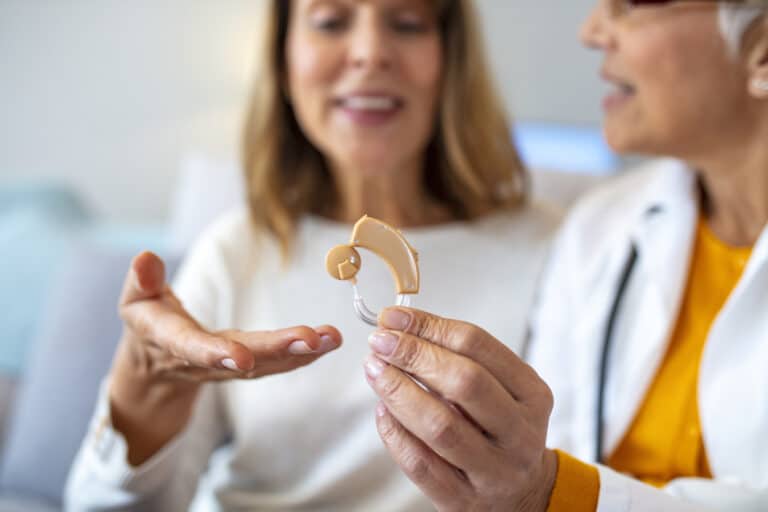Approximately 15% of U.S. adults report some degree of hearing loss. Among the most effective solutions for managing hearing loss are hearing aids and cochlear implants. Although both devices improve hearing clarity and ease, they function differently and are designed for varying degrees and types of hearing loss.
What To Know About Cochlear Implants

Cochlear implants use internal and external components to bypass damaged parts of the inner ear and directly stimulate the auditory nerve. The external component includes a microphone, sound processor and transmitter, while the internal component consists of a receiver and electrode array implanted in the cochlea—the spiral cavity in the inner ear responsible for transmitting sound.
Cochlear implant surgery is performed under general anesthesia and follows four basic steps:
- A small incision is made behind the ear
- An electrode is guided into the cochlea
- A processor is positioned between the muscle and bone behind the ear
- The incision is closed, and the patient recovers as the anesthesia wears off
Cochlear implant users generally require 4 to 6 weeks of initial programming appointments. During these sessions, an audiologist or auditory rehabilitation specialist assists the patient in learning to interpret new sounds—as sound perception may differ from what the patient is used to hearing.
What To Know About Hearing Aids
Hearing aids are sophisticated devices designed to amplify sound according to the wearer’s specific frequency needs. They consist of several key components:
- A small microphone to capture environmental sounds
- An amplifier to adjust the sound’s frequency and volume
- A speaker that directs the amplified sound into the wearer’s ear
There are several styles of hearing aids to accommodate different needs and aesthetic preferences, including:
- Completely-in-the-Canal (CIC)
- In-the-Canal (ITC)
- In-the-Ear (ITE)
- Behind-the-Ear (BTE)
- Receiver-in-Canal (RIC)
For patients with mild hearing loss who prefer a more discreet look, an audiologist may recommend CIC, ITC or ITE models. For those with moderate to severe hearing loss, BTE models are typically suggested.
Modern hearing aids often serve multiple purposes, with features like Bluetooth®, tinnitus masking, noise suppression and hands-free media streaming benefiting those with hearing loss.
Most hearing aids are non-invasive, user-friendly and suitable for patients with mild to moderate sensorineural or conductive hearing loss. While there may be a short adjustment period, most patients acclimate to hearing aids within a few weeks.
Choosing the Right Solution
Following a comprehensive hearing test, your audiologist will guide you in selecting the most appropriate treatment for your hearing loss. Whether considering hearing aids or cochlear implants, you can get back to enjoying the sounds of chirping birds in Dolores Park with the help of our experienced audiologists. Contact SH Audiology today to schedule a consultation.
